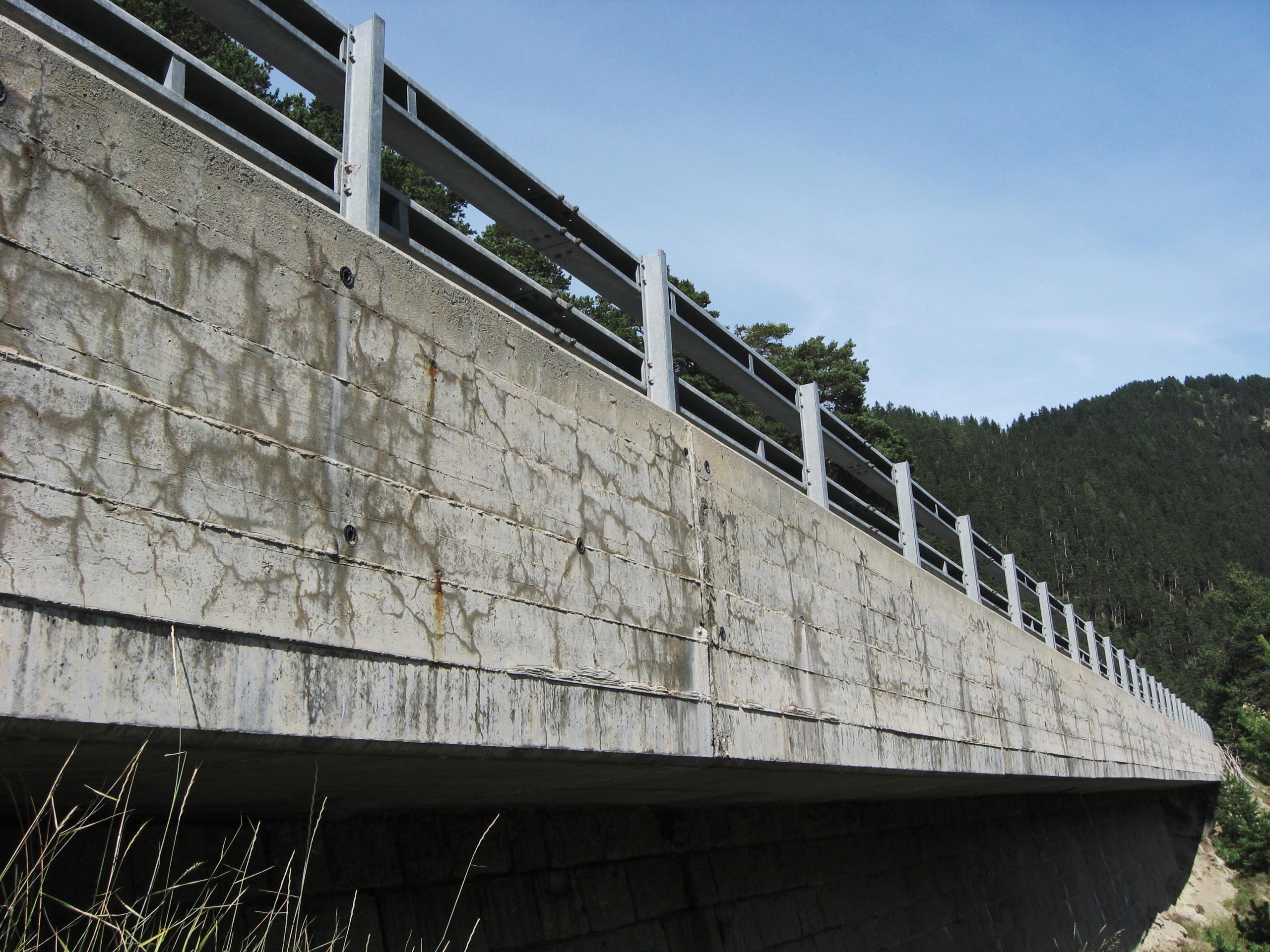"Concrete disease" is investigated
When bridges, dams and concrete foundations develop cracks, AAR is often the cause: the alkali aggregate reaction. It causes the concrete to swell and necessitates rehabilitation or new construction.

Unfortunately, concrete does not last forever. The ravages of time also gnaw away at concrete structures in Switzerland. Not only steel-reinforced structures such as bridges are affected, but also concrete structures without reinforcement, such as dam walls. One of the reasons for this is the so-called alkali aggregate reaction (AAR). It can affect all open-air concrete structures. In AAR, the ingredients of the concrete itself are the problem: Cement - the "glue" of concrete - contains alkali metals such as sodium and potassium. This turns the moisture in concrete into an alkali. The main constituents of concrete are sand and gravel. These in turn consist of silicates, for example quartz or feldspar. The alkaline water now reacts with these silicates and leads to the formation of alkali calcium silicate hydrate. This mineral deposits more and more water molecules in its structure, thus expanding and, over time, cracking the concrete from the inside.
Dam wall can expand
What is remarkable here is that the same reaction takes place in numerous gravel grains that are stuck in the concrete; the little stones are blasted one by one. The pressure that this microreaction can exert on an entire structure is enormous: a dam wall, for example, can expand by several decimeters. This can lead to damage at the lateral connection points to the rock or to deformation in the area of sluices. The reaction is slow, so that the first damage to affected structures only becomes noticeable after 10 to 15 years. However, the continuous swelling of the concrete can greatly shorten the service life of structures.
In 2015, a team of scientists from Empa and the Paul Scherrer Institute (PSI) succeeded in identifying for the first time the structure of the hydrous crystal that triggers swelling in concrete. Previously, the structure had been the subject of much speculation.
Interdisciplinary research project
The discovery was the trigger for an interdisciplinary research project funded by the Swiss National Science Foundation (SNSF). In addition to Empa and PSI, two EPFL institutes are involved; Empa researcher Andreas Leemann is coordinating the research activities. "We want to investigate and understand the AAR in all dimensions, from the atomic level and the length scale in the angstrom range to the effects on entire structures in the centimeter and meter scale," explains Leemann.
Six subprojects for all dimensions
To this end, six subprojects have been defined in the SNF-Synergia project: PSI is using synchrotron radiation to investigate the structure of the reaction products in order to explain their sources. At the EPFL, the decisive framework conditions for the dissolution of the silicates and the composition of the initially formed reaction products are being investigated; in addition, the effects of swelling on structures are being researched with computer simulations. And at Empa, on the one hand, the formation of the cracks in the concrete is recorded spatially and time-resolved with computer tomography in Empa's X-ray center; on the other hand, the water-containing crystals are synthesized in the laboratory. This enables the researchers to obtain larger quantities of the substance, which is usually found in nano- to micrometer-sized cracks in the gravel grains. Only with larger quantities of the substance in question, however, can physical properties be precisely determined. The knowledge gained in this way should not only serve to better understand AAR, but also point to ways in which damage - and thus costs - can be avoided.
"We are already in the midst of deciphering the phenomenon, which has so far only been known in part," says Leemann. The four-year research project started in May 2017. Initial results are already available. The next step is now to network the individual working groups more closely and build on the results of the partner groups. In the end, this should produce a complete picture of the AAR that will allow the condition and risk of concrete structures to be better assessed and the fate of the structures under attack to be monitored in a scientifically sound manner.









